myths of spring
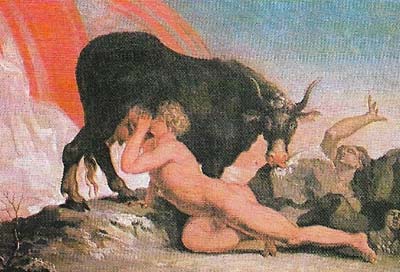
Figure 1. The giant Ymir was the first living being in Scandinavian myth; he was born f torn the melting ice and suckled by the cow Audumulla. After dying his body became land, his blood the seas, his skull the heavens, his bones mountains and his hair trees.

Figure 2. Trees play a large part in mythology, from the Indian Asvattha or tree of life and knowledge to this Scandinavian world tree Yggdrasil. This represents the entire world as a tree. The branches reach to the sky, the roots go down to Niflhel, the underworld. Near the root gushes the fountain Hvergelmir, the source of the rivers, while the disk-shaped middle world is encircled by a snake.
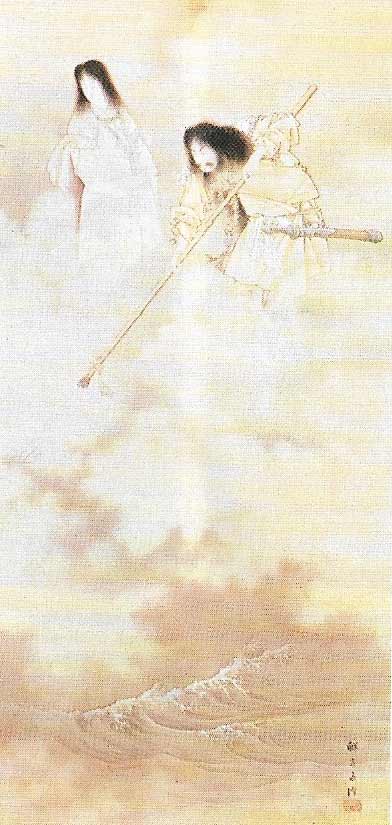
Figure 3. Izanagi and Winami were brother and sister and the last of seven generations of Japanese gods. Standing on the floating bridge of heaven they created the island of Onokoro by stirring the ocean with a celestial lance. When they descended to the land, lzanagi walked round it from the left, Izanami from the right. When they net lzanami spoke to her future husband first, expressing her pleasure at their sexual differences. So did lzanagi, but he was angry that the woman had spoken first. However, they produced two children; but as they turned out to be a leech and a foam island, they were both disowned. When the gods were consulted they said that the disaster was due to lzanami's mistake of having spoken first. So they went back and performed the ritual correctly and so produced the many islands of Japan. This myth illustrates the importance of ceremonial in Japan and suggests how the sexes should relate.
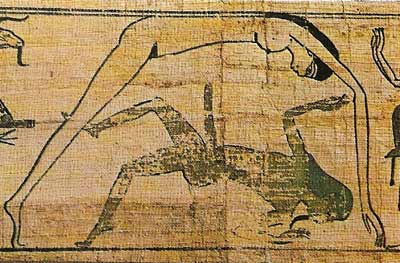
Figure 4. The separation of the Egyptian goddess Nut (sky) from her brother Geb (earth) is an example of the theme of separation from a previous state of existence in creation myths. Their embrace was so close that their father Shu (air) had to help. Interestingly, the Egyptian cosmos differs from most others in making the earth male and the sky female. The daily birth of the sun out of Nut (also identified with Hathor or Isis, all versions of the great mother goddess of Egypt) is the next step in the creation myth.
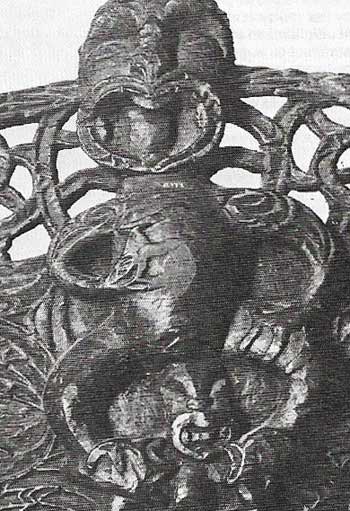
Figure 5. Maui, a hero from Oceania, achieved his deeds through trickery. He lassoed the Sun to give man a full day and stole fire (like Prometheus) from the gods. A clown, he expresses man's needs to poke fun at the gods.
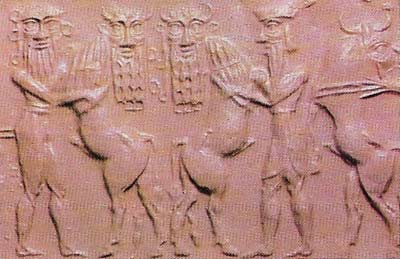
Figure 6. Gilgamesh, a hero of Babylonian myths, fought and overcame monsters. In this seal, c. 2200 BC, he and Enkidu, who is still close to the animal stage from which heroes evolve (reflecting the evolution of man from brute creation), fight a bull that was sent against Gilgamesh by Ishtar after he had repulsed her. Among the hero's functions is the conquest of instinct-driven nature and the establishment of civilization.
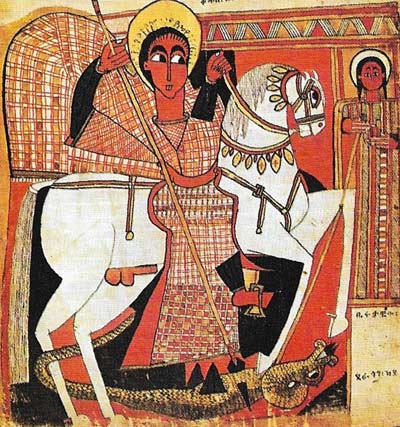
Figure 7. St George, seen here in a 17th-century Ethiopian painting, may have originated in an historical figure who lived in Palestine in the 3rd century. His task, shared with other heroes, is to overcome evil in the form of the dragon and free the maiden. The Greek hero Perseus likewise rescued Andromeda from a dragon after killing the dreaded Gorgon.

Figure 8. Hercules, here by Antonio Pollaiuolo (c. 1429–1498), rescued the Greeks from many dangers. The Lernaean Hydra was ravaging the country. Every time one of her heads was cut off, two sprang up in its place. He solved this by burning them with red-hot brands. By dipping his arrows in her blood, he made them poisonous.
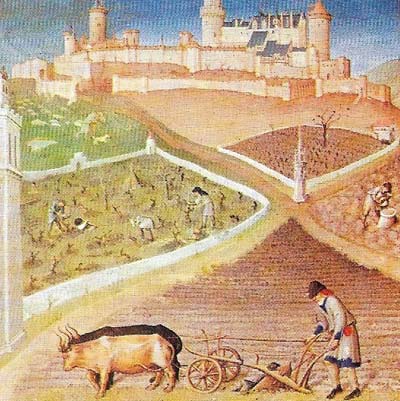
Figure 9. Spring, the time when the fields are prepared for the seed, parallels the myths of the creation of the Earth. In myths the plow is portrayed as phallic, while the furrows represent woman.
Myths can be divided either regionally, corresponding to the centers of civilization from which they originate, or according to their major themes. As some themes are common to all regions, albeit with varying emphasis, it is convenient to take one – the motif of the four seasons – and look at its mythological counterparts. Creation and hero myths (also called epics) correspond to the spring phase, representing the beginnings of mankind on earth.
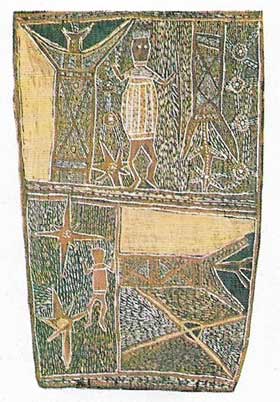 |
| According to an Australian myth, daylight is created when the morning star is blown into the sky by the east wind. Observation of the night sky gave the Aborigines the idea of time as an eternal cycle. |
The myths of creation
Creation myths deal with the origins of the world and presuppose that in the beginning there was something uncreated. This is usually presented as the Abyss or Chaos, vast and dark like Egyptian Nun, the primordial ocean in which lay the germs of all things and all beings before the creation.
The creator is invariably regarded as divine. But in some traditions, notably the Judeo-Christian, he is a non-human abstract "Father" and is eternal. In others, such as the Greek or Egyptian, the emphasis is intensely biological. This has two consequences. First, there are several versions, just as there is more than one method of procreation in the animal kingdom. Second, the ruling deity lives under the challenge of rivalry and death. (One explanation for the succession of gods that characterizes almost all mythologies is that it reflects invasions of an area by people with other gods, who have to be set above those of the conquered.)
The Egyptian god Atum (later known as Re) is usually described as a human male, but he is also referred to as bisexual, "that great He-She". Nevertheless, this ruler felt lonely and desired a companion. Alum created by masturbation the first creatures – Shu, who was male and represented air, and Tefnut, who was female and represented moisture. In another version he spat out Shu and Tefnut. To both he gave a vital essence, Ka, which may be regarded as the soul. This compares with the Jewish version of God breathing His divine life into Adam. In an earlier Egyptian myth, Atum is a serpent living in the dark waters of the Abyss, his outer coils forming the limits of the world. In subsequent versions, the creator was a mongoose which killed the snake (that is, himself), then a primeval goose and then an egg. All this took place in darkness, before heaven and earth were separated and before light was created (the reverse order from the account of the Creation in the Bible).
This Egyptian creation myth demonstrates two general principles. First, a mythology consists of several layers, comprising older and later versions which may coexist and form an amalgam. Second, myths of various regions share common elements – for instance the breath-and-soul-giving and the fashioning of man out of earth.
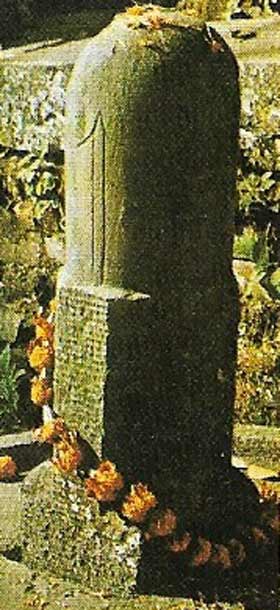 |
| The phallus or lingam is a holy motif in India. The female counterpart is called yoni. They symbolize all creative energy – antagonistic yet cooperative forces of sex; father heaven and mother earth. |
The origins and functions of the hero
With the beginnings of the world and cosmos accounted for, man has to explain himself and his culture. How did he learn to make fire how to fish, hunt, rear domestic animals, cultivate the earth, discover medicines and, later, develop a complex culture?
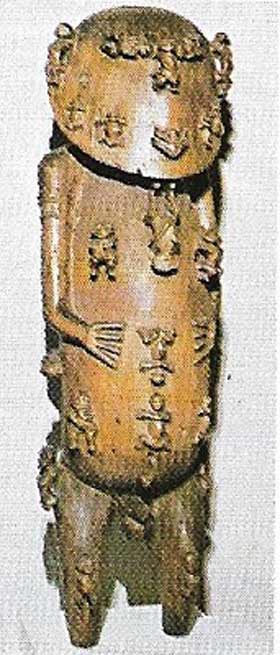 |
| Tangaroa, a creator and sea god, appears in many Polynesian myths. In Tonga and Samoa he existed along above a vast expanse of water and then threw down a stone that became land. His bird messenger planted a vine, but it rotted and in the decomposing matter a swarm of maggots became men and women. In the Society Islands he is pictured as existing in an egg-like shell that revolved in space with no sky, land, or sun – a parallel with the womb and a common mythological idea. |
Inventions of such extraordinary importance for man's survival were ascribed to cult heroes who had obviously been endowed with unusual talents. These heroes were generally the illegitimate sons of gods who were persecuted by their fathers' offended spouses. The heroes' deeds and inventions benefited man both materially and spiritually. They served as models for people who had to live and struggle, suffer defeats, enjoy some triumphs and die. Thus each epic forms a cycle analogous to the rise, zenith, and sinking of the sun each day.
The dawn (or birth) phase of the hero's life, well illustrated in the myth of Hercules (Figure 8), foreshadows the aims and objects of his existence. In Hercules' case these were the preservation of life by saving a land from an oppressive ruler. the founding of a civilization and the renewal and assertion of man's spiritual potential over a lowly and purely instinct-driven life (Figures 6 and 7).
Trickery and stealth
Another version of the opening phase may be seen when the heroic deed is accomplished by stealth (notably trickery or theft) (Figure 5). As usual, the ruling powers are offended, but despite the punishment they inflict the deed is done and mankind has progressed one step nearer equality with the gods.
Among the best-known hero-thieves in Western civilization is Prometheus, who stole the fire that had been the privilege of the Olympians. The significance of fire was not only that man could now cook formerly inedible foods and keep warm. Fire also gave him light – an analogy for an increase of human consciousness. Zeus punished Prometheus by chaining him to a rock, where his liver was eaten in daytime by an eagle but at night it grew again in readiness for the next feast. Zeus also offset the benefit that Prometheus had brought to mankind by a devious and malevolent device: he had the beautiful Pandora (All-giving) created and sent to Epimetheus, Prometheus' stupid brother, who married her. She it was who took the lid off a box out of which flew all the diseases and sufferings that afflict mankind. Comparison with the paradisaical story of the Fall – embracing the view of woman as the dangerous temptress – is obvious. To overcome her threatening power was one of the hero's tasks. This done, woman could become his indispensable helper.
